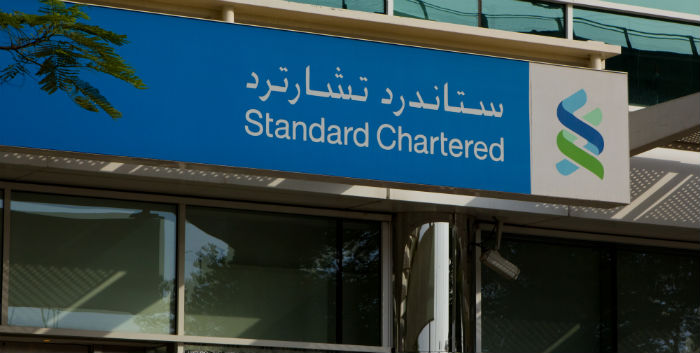StanChart Sees $330m Iran Fine, Profit Rise Erodes
The lender already paid $340 million to New York’s Department of Financial Services in Q3 2012.

Standard Chartered expects to pay $330 million to settle a case with US regulators for breaking sanctions on Iran, the Asian-focused bank said on Thursday, a second such penalty which could almost wipe out its profit growth this year.
Standard Chartered already paid $340 million to New York’s Department of Financial Services (DFS) in the third quarter, and the London-based bank said the settlement with federal and other state regulators was expected “very shortly”.
The original DFS fine will cut pretax profit growth this year to around 5 percent, from an underlying profit rise of more than 10 per cent, the bank said in a trading update – so the additional payment could leave profits near flat on the year.
The DFS, New York’s banking regulator, said Standard Chartered had hidden financial transactions with Iran. The bank agreed to pay the civil penalty after its stock dropped due to the allegations and a threat to revoke its licence to do business in New York.
The United States has led the drive for sanctions, hoping to halt an Iranian nuclear programme which Washington suspects is aimed at producing weapons although Tehran says it is peaceful.
Even slim earnings growth would mean a 10th straight year of record profits, as StanChart has ridden on Asia’s rise through much of the last decade, allowing it to continue hiring and increasing earnings when much of the industry is shrinking.
Finance Director Richard Meddings estimated Standard Chartered could have to pay $320-330 million next year under a British bank levy. This is about $65 million more than originally expected, due to finance minister George Osborne’s announcement on Wednesday that the levy would be raised.
Standard Chartered expects to pay about $210 million under the tax this year, up from $165 million in 2011, and warned that there has been a “significant and increasing cost of regulation”, in particular for liquidity.
The levy has been criticised for being harder on banks that are expanding their balance sheet, even outside Britain. These include Standard Chartered, which has threatened to quit London if the cost of being based in Britain becomes too much.
Despite its regulatory costs, the bank is one of the few still hiring and Meddings told analysts he expected to add more staff this year than the previous guidance of about 1,500.
“We expect it now to be through 2,000 by the end of the year as we continue to hire. A lot of that hiring is in the back office support functions and compliance and risk, but it’s also in consumer banking,” he told analysts on a call.
Meddings said the bank would add a similar number of jobs next year. “We’d expect to be at around the same level for next year,” he told Reuters.
By contrast, most rivals have been cutting, with Citi saying on Wednesday it was cutting 11,000 jobs.
A LID ON COSTS
A rise in the number of unemployed bankers meant Standard Chartered could keep a lid on costs, with revenue growing faster than costs – a phenomenon known in financial industry jargon as “positive jaws”. However, cost growth in its wholesale bank, effectively its investment banking arm, would be higher than income growth due to the DFS fine, it said.
For much of 2010, StanChart was hit by ever-rising costs as an increasing number of banks and brokerages tried to expand in Asia. Since then, various minor players including Samsung Securities and KBW have begun pulling out.
The bank does not release specific numbers in its trading updates, which it keeps for annual results typically in late February. It singled out Malaysia, China and Indonesia as regions where income grew by at least 10 percent.
In Hong Kong, its biggest market, income grew at a high single-digit percentage, the bank said.
StanChart’s Hong Kong-listed shares are up nine per cent year-to-date, lagging the 20 per cent rise on the Hang Seng Index.
Asset quality remained good, the bank said, with loan impairments within the wholesale bank expected to be below the levels seen in the first half of this year. For the consumer bank, loan impairment is expected to increase by at least 10 percent from the first half.
However, StanChart pointed to India and the Middle East as two markets where it was watchful for asset quality. Slowing growth in some emerging markets has raised concern that StanChart could be hit by a rise in bad loans.
